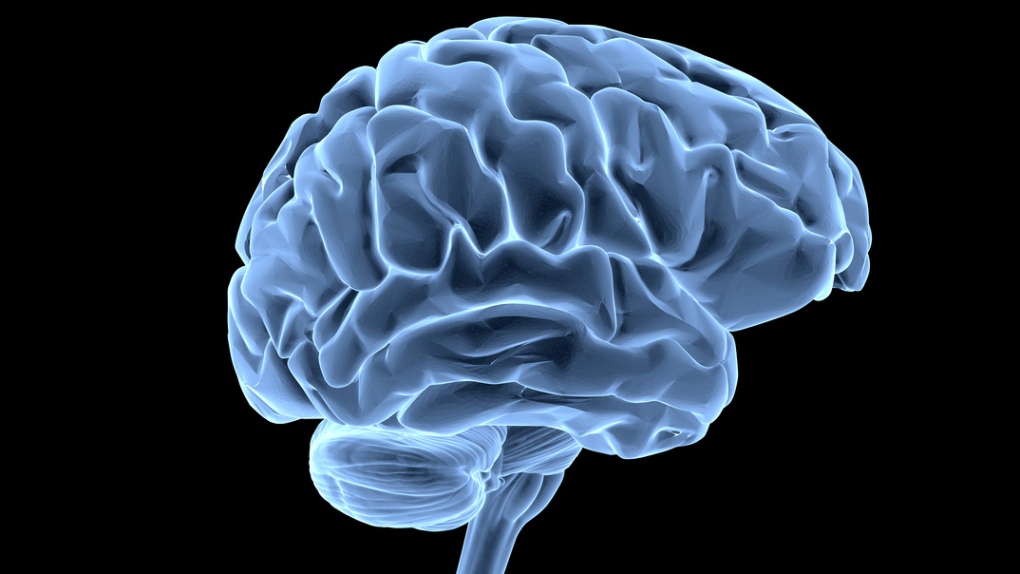University of Winnipeg research could help with understanding brain diseases and disorders
 The human brain is pictured in this file photo. (goa_novi / Istock.com)
The human brain is pictured in this file photo. (goa_novi / Istock.com)
New research on the human brain out of the University of Winnipeg could end up changing how doctors can diagnose and treat central nervous system disorders.
Dr. Sheryl Herrera with the U of W, and Maxina Sheft with Georgia Tech co-authored a paper that examined the first axon diameter measurement in the human brain of only two one-thousandths of a millimetre.
Axons are part of nerve cells in the brain and they help transmit electric signals in the brain and before this paper, their diameter could only be measured up to five one-thousandths of a millimetre.
Dr. Melanie Martin, who is a physicist at the U of W and was part of the team doing the research, said the smaller measurements could be found using oscillating gradient spin echo sequences.
"What we are looking at is the diffusion of water molecules within the brain. So diffusion is random motion," said Martin. "The molecules will move around and bump into other molecules, and just looking at the movement of the molecules in tissue, we can see how big it is."
She said they can view these axons through an MRI and they can determine how big the axon is based on how far the water has diffused.
Finding the different sizes of the axons could help doctors understand more about central nervous system disorders, according to Martin.
"It turns out the size of the axons are thought to change in disorders and diseases."
Martin used schizophrenia, for example, noting that previous research done on brains with schizophrenia during an autopsy found that the axons were smaller.
"Schizophrenia is usually diagnosed in (people's) 20s. It's difficult to diagnose, the person has to trust the doctor and explain the symptoms, so typically it takes about a year to get a diagnosis. But if this is true, that the axons are less dense and we can pick it up with MRI, the hope is MRI can diagnose this faster."
She said the next step is to learn if these axons are the same size at birth and if they are, doctors might be able to find ways to treat the disorder or prevent it from happening altogether.
"When I go to talk about this research across the world, there's usually neuroscientists in the audience and they always stick up their hand and they're like, 'Have you thought about this disease?' I come from a physics background, not the neuroscience background. So it's always fascinating to me to hear of another disease and read more about it and say, 'Well hey, this actually might work.'"
She added this could help play a role in better understanding disorders like fetal alcohol spectrum disorder, dementia and Alzheimer's disease.
CTVNews.ca Top Stories

Trudeau's 2024: Did the PM become less popular this year?
Justin Trudeau’s numbers have been relatively steady this calendar year, but they've also been at their worst, according to tracking data from CTV News pollster Nik Nanos.
Calling all bloodhounds: These P.E.I. blood donors have four legs and a tail
Dogs are donating blood and saving the lives of canines at the University of Prince Edward Island's Atlantic Veterinary College in Charlottetown.
Wild boar hybrid identified near Fort Macleod, Alta.
Acting on information, an investigation by the Municipal District of Willow Creek's Agricultural Services Board (ASB) found a small population of wild boar hybrids being farmed near Fort Macleod.
Manhunt underway after woman, 23, allegedly kidnapped, found alive in river
A woman in her 20s who was possibly abducted by her ex is in hospital after the car she was in plunged into the Richelieu River.
New rules clarify when travellers are compensated for flight disruptions
The federal government is proposing new rules surrounding airlines' obligations to travellers whose flights are disrupted, even when delays or cancellations are caused by an "exceptional circumstance" outside of carriers' control.
Summer McIntosh makes guest appearance in 'The Nutcracker'
Summer McIntosh made a splash during her guest appearance in The National Ballet of Canada’s production of 'The Nutcracker.'
A 9-year-old is among 5 killed in the Christmas market attack in Germany
A nine-year-old was among five people killed when a Saudi doctor intentionally drove into a Christmas market teeming with holiday shoppers in the German city of Magdeburg, an official said Saturday.
Toronto firefighters rescue man who fell into sinkhole in Yorkville
A man who fell into a sinkhole in Yorkville on a snowy Friday night in Toronto has been rescued after being stuck in the ground for roughly half an hour.
It's eggnog season. The boozy beverage dates back to medieval England but remains a holiday hit
At Scoma's Restaurant in San Francisco, this holiday season 's batch of eggnog began 11 months ago.


































